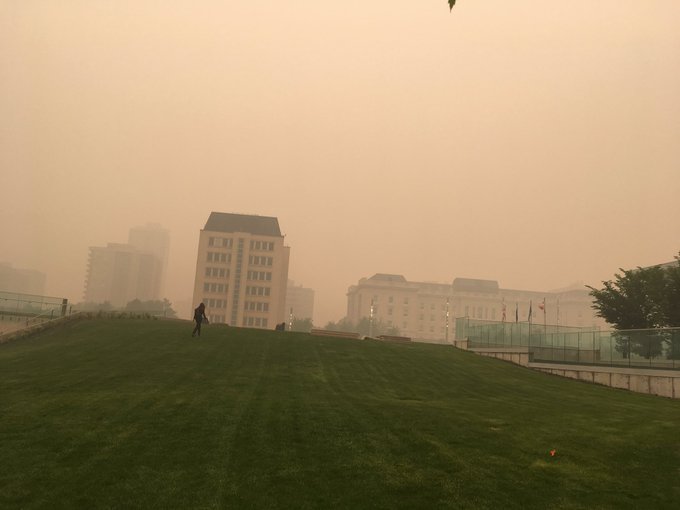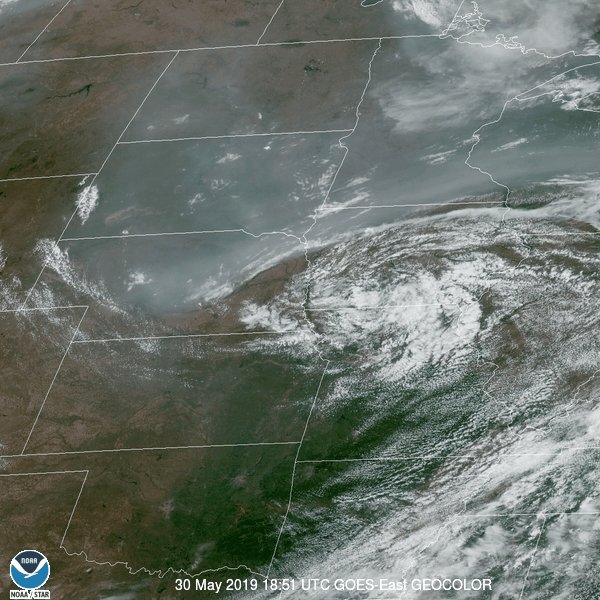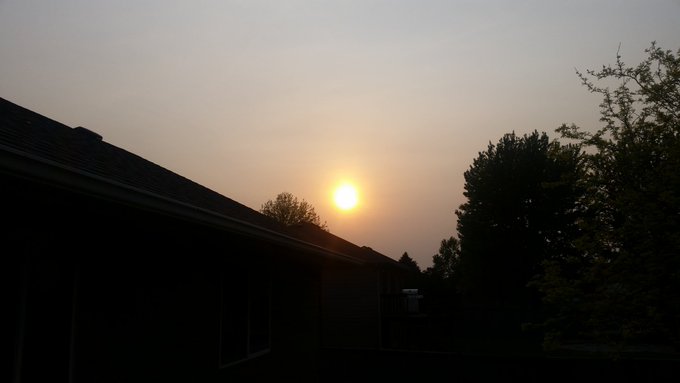By Amanda Schmidt, AccuWeather staff writer
Several wildfires are raging across Alberta, a western province in Canada, spewing large amounts of smoke into the atmosphere and shrouding Canadian cities, such as Calgary and Edmonton, and even sending smoke billowing into the northern United States airspace.
While there are several fires burning throughout the province, three major fires burning in the northern half of the province are the main focus.
The Chuckegg Creek wildfire is out of control and located about 3 miles (5 kilometers) south of the town of High Level, Alberta. This particular fire is about three times the size of the city of Edmonton, according to AccuWeather Senior Meteorologist Brett Anderson.
Officials estimate that about 10,000 people have been forced to evacuate in and around High Level as a result of the blaze.

"Edmonton looks like silent hill or something. Bunch of fires in Alberta right now,” Twitter user Michael Tash said on Thursday, May 30.
The Battle wildfire is under control and located in the Battle River area. The McMillan wildfire is currently out of control and located about 25 miles (40 kilometers) northeast of the town of Slave Lake, Alberta.
"The combination of prolonged, unseasonably warm weather and severe drought have encouraged the rapid spread of these fires. Typically, we do not see large fires like this so early in the season," Anderson said.
These massive fires are producing tremendous amounts of smoke, which is being carried great distances. Surface smoke has spread all the way into southern Alberta causing reduced visibility and poor air quality.
Local officials, including Environmental Canada, have issued a special air quality statement for affected areas of Alberta.
RELATED:
How inhaling wildfire smoke can wreak havoc on your health
How wildfire smoke can irritate your eyes, what you can do to protect them
How to prepare for wildfires so you can escape safely if a blaze approaches
How inhaling wildfire smoke can wreak havoc on your health
How wildfire smoke can irritate your eyes, what you can do to protect them
How to prepare for wildfires so you can escape safely if a blaze approaches
"Visibility has lowered to three-quarters of a mile in smoke in Calgary Friday," Anderson said. "There were reports Thursday of a thin layer of ash on some surfaces in and around Edmonton, Alberta."
Wildfire smoke can lead to many health hazards, especially in those who suffer from respiratory illnesses, and can cause irritation of the throat and eyes.
Many social media users posted eerie photos of the oppressive smoke filling the sky, and some compared the scene to horror movies.
"Edmonton looks like Silent Hill or something. Bunch of fires in Alberta right now,” social media user Michael Tash said on TwitterThursday.
The smoke has also spread farther south, pouring into the north-central United States. For example, residents in Chicago, Illinois, may have noticed hazy, smoke-filled air as a result of the wildfires burning in Canada.
Besides the milky haze of the smoke in skies, what may be most noticeable is an enhancement of sunsets where smoke reaches in the U.S., Anderson stated.
Plumes of smoke and particles from wildfires that accumulate in the atmosphere can scatter sunlight as it attempts to reach Earth. Since blue light has a shorter wavelength than red light and is more easily scattered by a wildfire's smoke, sunsets can appear more red and vivid.
The smoke pouring down from Canada into U.S. airspace made for quite a spectacle from outer spaces as well. NOAA's GOES East weather satellite picked up imagery of the smoke being pulled by upper-level winds down as far south as northern Kansas and northeastern Colorado.
Should smoke be drawn down to the surface, health hazards and air quality alerts could result in parts of the U.S., Anderson explained.
The wildfire smoke can also impact the weather conditions in parts of the central U.S.
"If the smoke is thick enough high in the atmosphere, it can diminish the heating of the sun and take the edge off of thunderstorms that develop, thus suppressing the potential for severe weather in some areas of the north-central U.S.," AccuWeather Senior Meteorologist Alex Sosnowski said.
The total number of fires across Canada is running well below the 10-year average so far this year. However, the total area burned is running well above the 10-year average, meaning fires are larger and spreading more quickly.
"Over the past 10 years, there has been little change (no real trend) in the number of fires across Canada, but there has been a clear upward trend in area burned," Anderson said.
Looking ahead, a significant pattern change is expected across western Canada next week with a turn to cooler and wetter conditions, which should help slow the advancement of these fires.
"Temperatures may be as much as 10 degrees Celsius below average by the second half of next week. The one concern with this pattern change is that we may see an increase in wind before the cooler air arrives," Anderson said.
AccuWeather's summer forecast for the region is warmer and drier weather compared to normal, which may lead to a "long and very active fire season in western Canada," Anderson said.









No comments:
Post a Comment